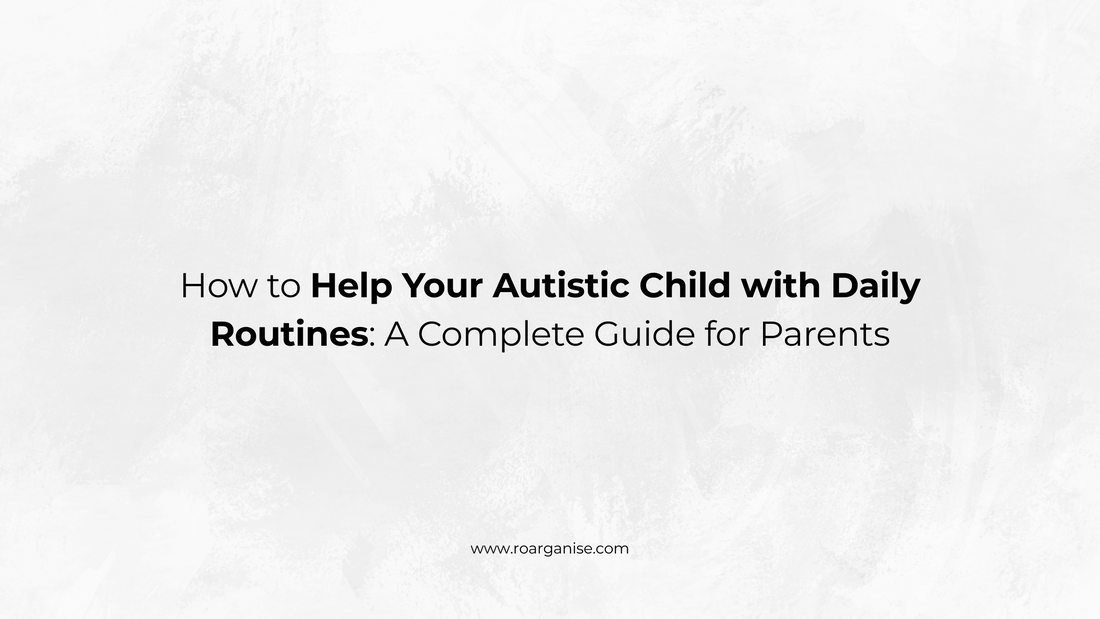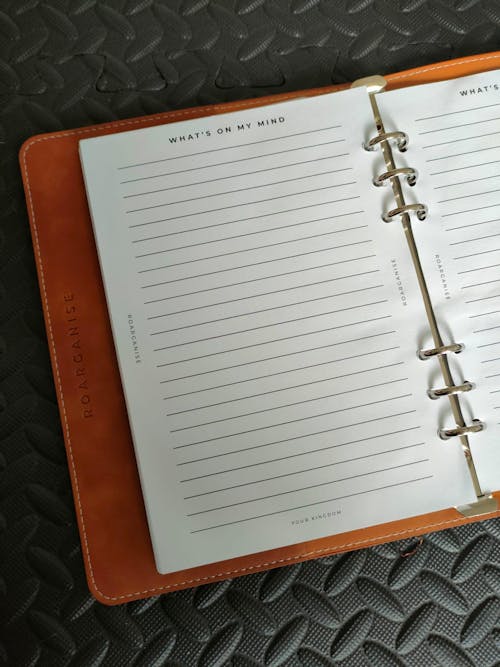
How to Help Your Autistic Child with Daily Routines: A Complete Guide for Parents
Share
Why Daily Routines Are Essential for Autistic Children
Autism and daily routines go hand in hand because predictable patterns reduce anxiety and sensory overwhelm. Children with autism spectrum disorder (ASD) thrive when they know what to expect, making autism routine charts and structured schedules invaluable tools for family success.
Research shows that consistent autism daily schedules can significantly reduce meltdowns, improve communication, and boost independence in autistic children.
Creating Autism-Friendly Morning Routines
Morning routines for autistic children set the tone for the entire day. Start with these autism routine strategies:
Visual Schedule Creation
- Use autism visual schedules with clear, sequential images
- Include ADHD and autism planning tools that show time expectations
- Create sensory-friendly planners with calming colours and readable fonts
- Implement neurodivergent organisation systems that reduce cognitive load
Essential Morning Steps
- Wake-up routine with gentle lighting
- Autism breakfast routine with preferred foods
- Getting dressed with sensory-friendly clothing choices
- Hygiene routines broken into manageable steps
- School preparation using autism school planners
Bedtime Routines That Actually Work
Autism bedtime routines require special consideration for sensory needs and transition difficulties:
- Sensory bedtime activities like weighted blankets or soft music
- Visual bedtime schedules showing each step clearly
- Autism sleep routines that account for sensory sensitivities
- Calming activities tailored to your child's preferences
The Power of Visual Planning Tools
Neurodivergent-friendly planning systems are game-changers for autism support. Look for:
- Autism visual planners with clear, intuitive layouts
- ADHD daily planners that break tasks into manageable chunks
- Sensory-friendly materials that feel comfortable to touch
- Autism organisation tools designed by neurodivergent minds
The best autism planning resources grow with your child, adapting from picture schedules to written planners as they develop.
Managing Autism Routine Changes
Autism and flexibility can coexist with proper preparation:
Preparing for Changes
- Use social stories for autism to explain upcoming changes
- Create autism transition strategies with visual supports
- Develop autism coping strategies for unexpected disruptions
- Practice autism routine flexibility during calm moments
School and Autism Routines
Autism school support extends beyond the classroom. Coordinate with teachers using:
- Autism home-school communication tools
- Special needs planning resources
- Autism educational support materials
- SEND planning tools for consistent approaches
Building Independence Through Routines
Autism independence skills develop naturally through well-structured routines:
- Life skills for autism embedded in daily activities
- Autism self-care routines that build confidence
- Independence planning with gradual responsibility increases
- Autism daily living skills practice opportunities
Common Challenges and Solutions
"My child won't follow the routine"
- Simplify steps further
- Increase visual supports
- Check for sensory issues
- Ensure autism routine consistency
"Routines work at home but not elsewhere"
- Create portable autism travel schedules
- Use autism social stories for new environments
- Develop autism routine adaptations for different settings
The Role of Sensory Considerations
Autism sensory routines must account for individual sensory profiles:
- Sensory diet planning throughout the day
- Autism sensory breaks built into routines
- Sensory-friendly environments for routine activities
- Autism sensory tools integrated naturally
Professional Support and Resources
When autism routine support needs additional help:
- Autism occupational therapy for sensory integration
- Autism behaviour support for challenging routines
- Special needs family support groups and resources
- Autism parent resources for ongoing learning
Technology and Autism Routines
Modern autism apps and tools can enhance routine success:
- Digital autism schedules for tech-savvy children
- Autism reminder apps for routine steps
- Visual schedule apps with customisation options
- Autism planning software for family coordination
Measuring Success
Track progress with autism routine tracking:
- Note reduction in meltdowns
- Observe increased independence
- Monitor improved transitions
- Celebrate small victories consistently
Long-term Benefits of Structured Routines
Autism life skills development through consistent routines leads to:
- Enhanced autism independence
- Improved autism social skills
- Better autism emotional regulation
- Increased autism self-confidence
Getting Started Today
Begin your autism routine journey with these immediate steps:
- Choose one routine to focus on first
- Create simple visual supports
- Involve your child in the planning process
- Start with existing activities they already do
- Be patient and celebrate progress
Remember, every autistic child is unique. What works for one may need adaptation for another. The key is finding personalised autism solutions that fit your family's specific needs.
At ROARGANISE, we understand autism routines because we live them. Our neurodivergent-friendly planning systems are designed by an autistic founder who knows what works for autistic minds. Discover our range of sensory-friendly planners, autism organisation tools, and visual scheduling systems at roarganise.com 🧩✨ #AutismSupport #NeurodivergentFriendly #AutismRoutines #SpecialNeeds #AutismParenting #ADHD #SensoryFriendly #AutismPlanning









